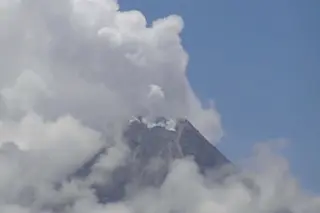The steaming summit of Mayon seen on May 7, 2013, where a small phreatic explosion killed 5 climbers. Image: From video by rmlorayes / YouTube. Volcanoes are dangerous places. Even if it has been quiet for months, years, decades or longer, hazards abound. Even if there is no eruption ongoing, their slopes are unstable, in many cases hot gases or fluids escape from the ground, the rocks are barren and jagged, their summit can tower thousands of meters above the landscape. When an eruption is occurring, not surprisingly, they shouldn't be approached -- at least not for sport. Explosions can unexpectedly occur even if the volcano has offered no signs that such an event might occur and even small explosions can be deadly. When you hike or climb to the crater of an volcano, you need to be aware of the risk -- that you might not come back, even ...
Five Climbers Killed in Small Explosion at Mayon
The Mayon volcano explosion reveals the dangers of climbing, emphasizing the need for volcano safety guidelines and awareness of risks.
More on Discover
Stay Curious
SubscribeTo The Magazine
Save up to 40% off the cover price when you subscribe to Discover magazine.
Subscribe













